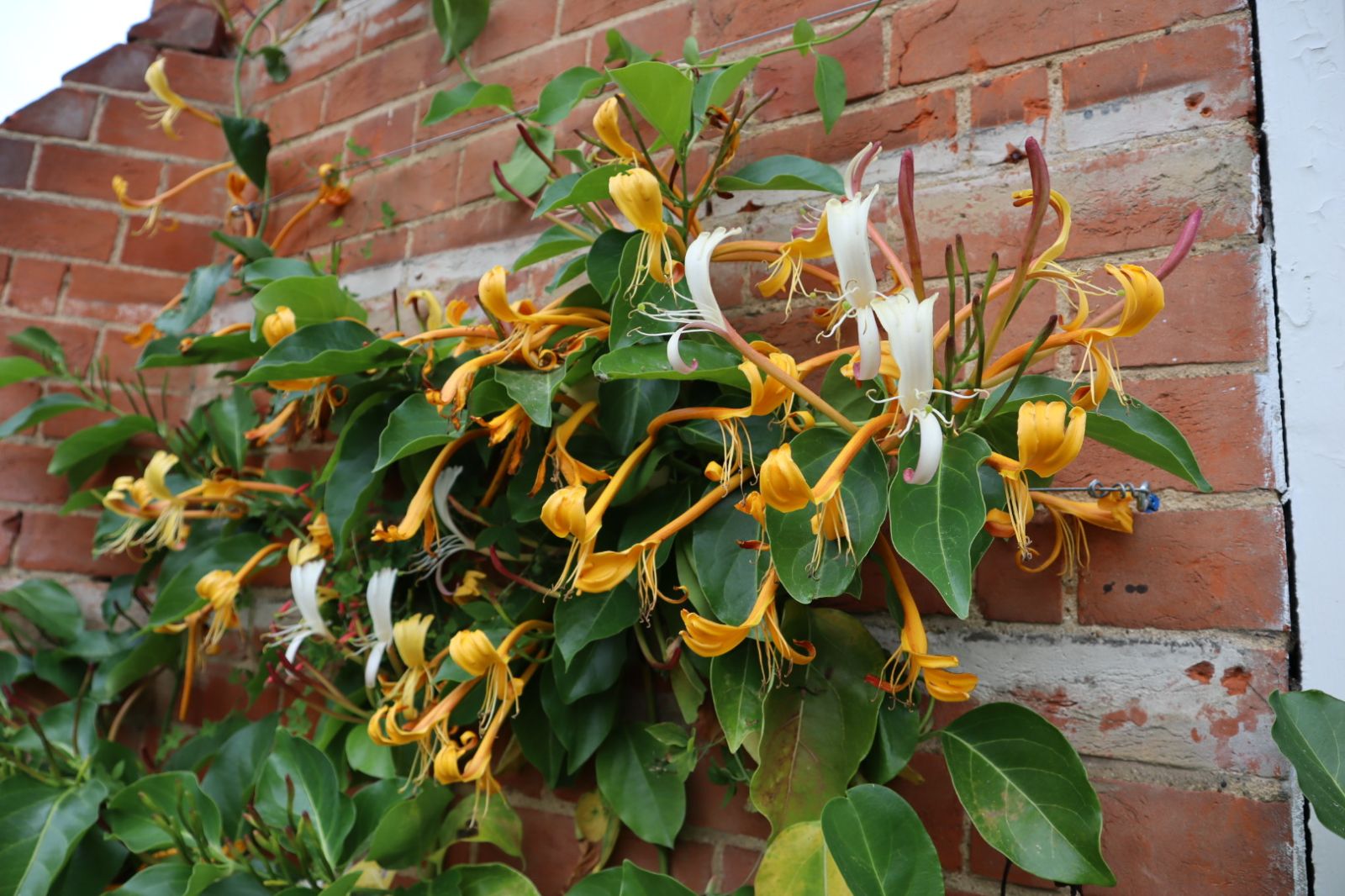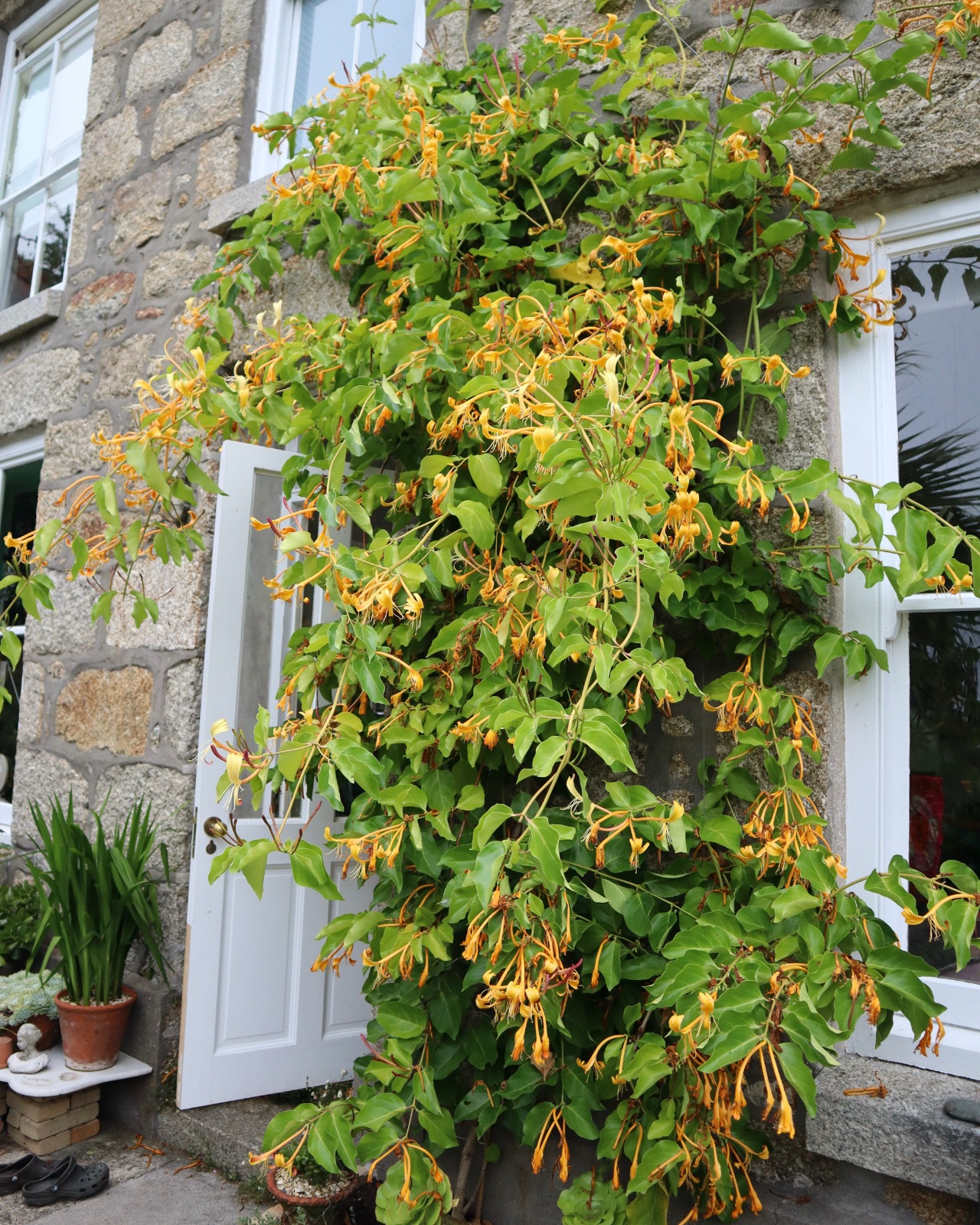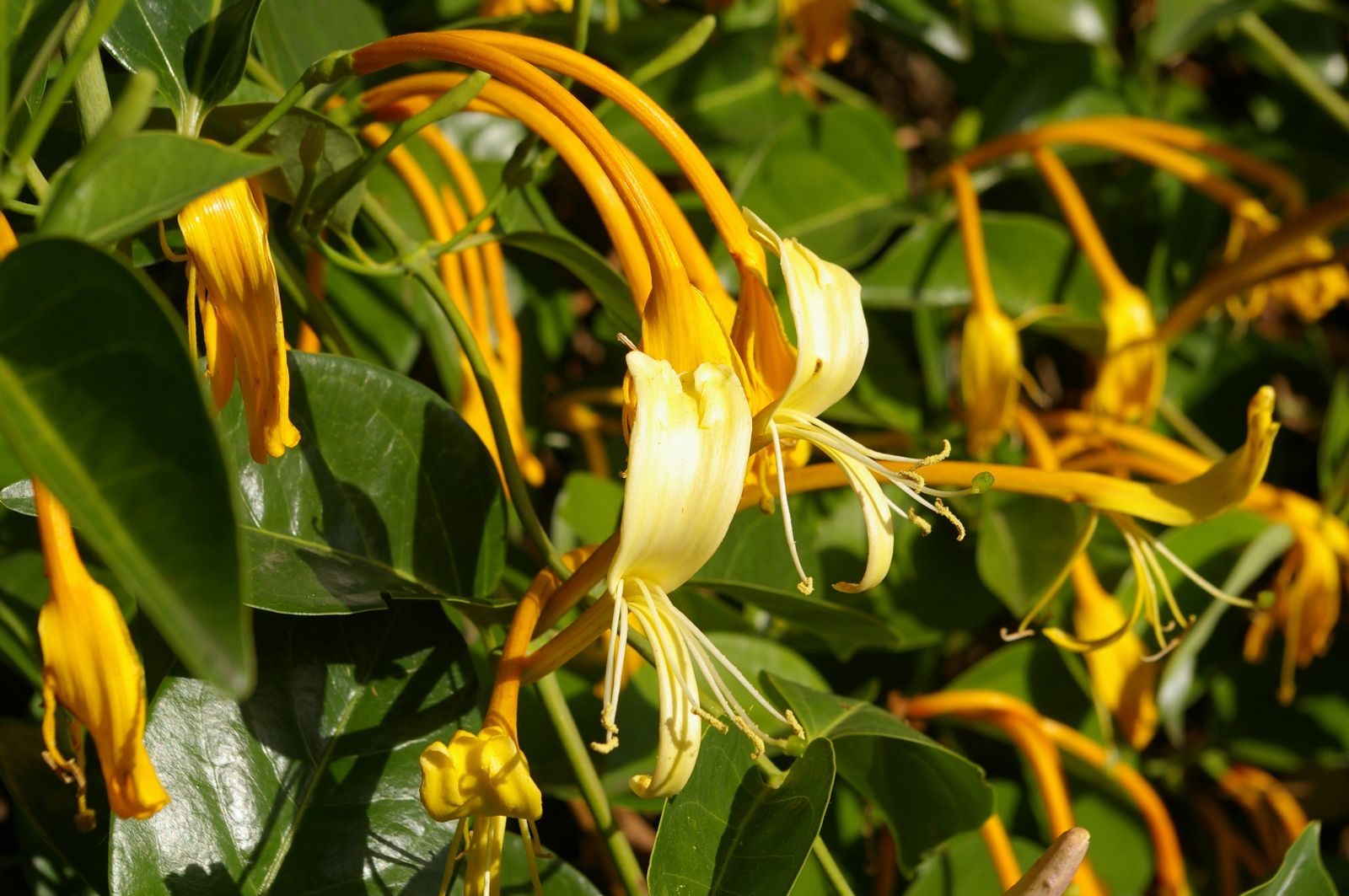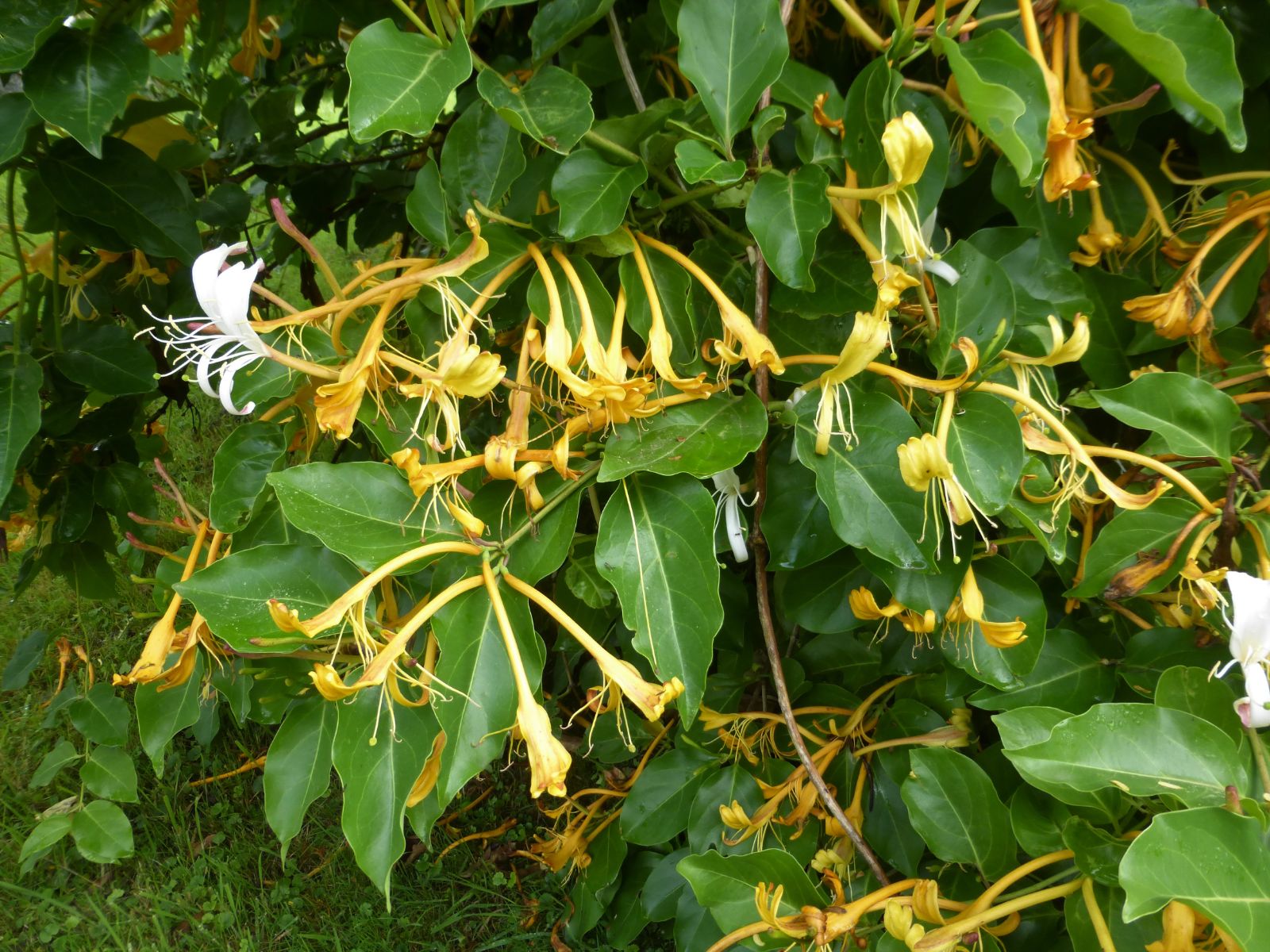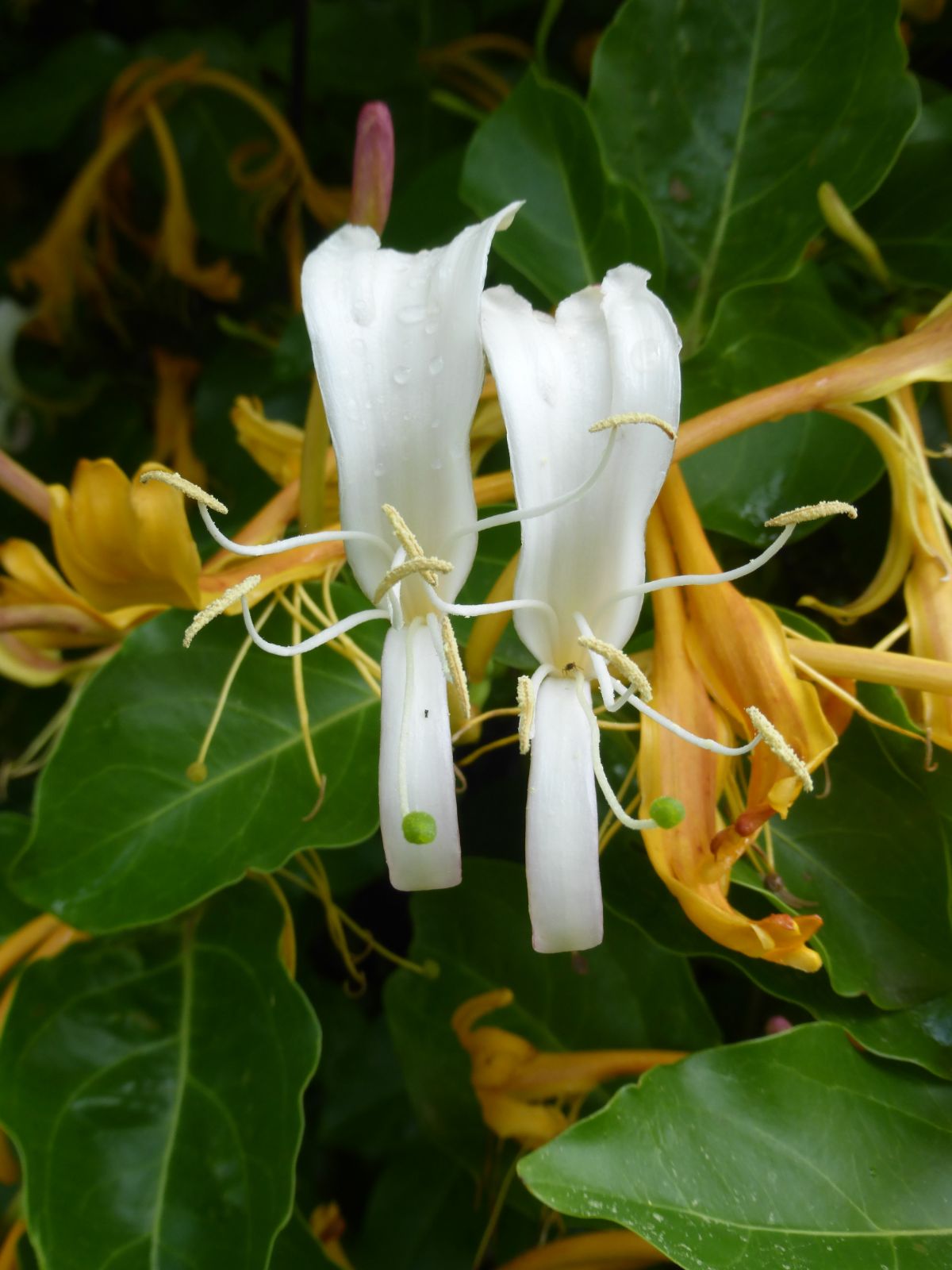Lonicera hildebrandiana
Credits
Article from Bean's Trees and Shrubs Hardy in the British Isles
Recommended citation
'Lonicera hildebrandiana' from the website Trees and Shrubs Online (treesandshrubsonline.
Genus
Other taxa in genus
- Lonicera albertii
- Lonicera alpigena
- Lonicera alseuosmoides
- Lonicera altmannii
- Lonicera × americana
- Lonicera angustifolia
- Lonicera × brownii
- Lonicera caerulea
- Lonicera caprifolium
- Lonicera caucasica
- Lonicera chaetocarpa
- Lonicera chrysantha
- Lonicera ciliosa
- Lonicera deflexicalyx
- Lonicera dioica
- Lonicera etrusca
- Lonicera ferdinandii
- Lonicera flava
- Lonicera fragrantissima
- Lonicera giraldii
- Lonicera griffithii
- Lonicera gynochlamydea
- Lonicera × heckrottii
- Lonicera henryi
- Lonicera hirsuta
- Lonicera hispida
- Lonicera iberica
- Lonicera implexa
- Lonicera japonica
- Lonicera korolkowii
- Lonicera ledebourii
- Lonicera maackii
- Lonicera maximowiczii
- Lonicera microphylla
- Lonicera morrowii
- Lonicera myrtillus
- Lonicera nervosa
- Lonicera nigra
- Lonicera nitida
- Lonicera periclymenum
- Lonicera pileata
- Lonicera prolifera
- Lonicera prostrata
- Lonicera purpurascens
- Lonicera × purpusii
- Lonicera pyrenaica
- Lonicera quinquelocularis
- Lonicera rupicola
- Lonicera ruprechtiana
- Lonicera sempervirens
- Lonicera setifera
- Lonicera similis
- Lonicera splendida
- Lonicera standishii
- Lonicera syringantha
- Lonicera tangutica
- Lonicera tatarica
- Lonicera tatsienensis
- Lonicera × tellmanniana
- Lonicera thibetica
- Lonicera tomentella
- Lonicera tragophylla
- Lonicera trichosantha
- Lonicera xylosteum
- Lonicera yunnanensis
A vigorous evergreen climber (or nearly deciduous in cool places) growing 60 to 80 ft high, without down in all its parts. Leaves broadly ovate, oval or roundish oval, abruptly contracted at the apex to a short point, broadly tapered at the base, 3 to 6 in. long, half to two-thirds as wide, dark green above, paler and with scattered glands beneath; stalk 1⁄3 to 3⁄4 in. long. Flowers fragrant, produced from the leaf-axils and in a terminal raceme, always in pairs, each pair joined to a short stalk 1⁄4 to 3⁄4 in. long. Corolla 31⁄2 to 6 in. long, creamy white changing to rich orange, the long slender tube dividing at the mouth into two lips, one of which consists of four short lobes, the other of a single narrow lobe much recurved; they give the flower a diameter of 2 to 3 in. Fruits ovoid, 1 to 11⁄4 in. long. Bot. Mag., t. 7677.
Native of Burma, Siam, and China; discovered by Sir Henry Collet in 1888 on the Shan Hills. Henry found it also in Yunnan, China. The species is of great interest as the largest in size, leaf, flower, and fruit of all the honeysuckles. It is not hardy at Kew, but is grown in the Temperate House, where it climbs to the roof. Shy-flowering in its early years, it starts to flower when of full size if exposed to lull sunshine. It is grown out-of-doors in several mild localities. It first blossomed in the British Isles at Glasnevin in August 1898, and it flowered at Kew the following June.
The specific epithet of this species is erroneously spelt hildebrandtiana in the Index Kewensis. It commemorates a Mr Hildebrand, superintendent of the Southern Shan states, who assisted Sir Henry Collet in his collecting, and not the German botanist Hildebrandt.

